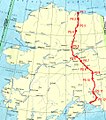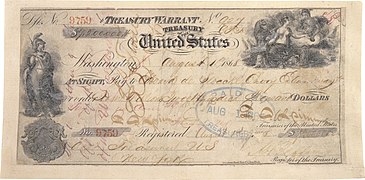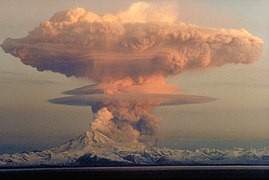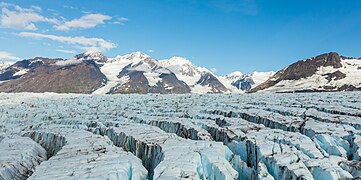 Introduction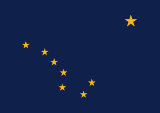   Alaska (/əˈlæskə/ ə-LASS-kə) is a non-contiguous U.S. state on the northwest extremity of North America. It is in the Western United States region. The only other non-contiguous U.S. state is Hawaii. Alaska is also considered to be the northernmost, westernmost, and easternmost (the Aleutian Islands cross the antimeridian into the eastern hemisphere) state in the United States. To the east, it borders Canada (the Yukon territory, and the province of British Columbia). It shares a western maritime border, in the Bering Strait, with Russia's Chukotka Autonomous Okrug. The Chukchi and Beaufort Seas of the Arctic Ocean lie to the north, and the Pacific Ocean lies to the south. Technically a semi-exclave of the U.S., it is the largest exclave in the world. Alaska is the largest U.S. state by area, comprising more total area than the next three largest states of Texas, California, and Montana combined; it is the seventh-largest subnational division in the world. It is the third-least populous and most sparsely populated U.S. state, but is, with a population of 736,081 as of 2020, the continent's most populous territory located mostly north of the 60th parallel, with more than quadruple the combined populations of Northern Canada and Greenland. The state contains the four largest cities in the United States by area, including the state capital of Juneau. The state's most populous city is Anchorage and approximately half of Alaska's residents live within its metropolitan area. Indigenous people have lived in Alaska for thousands of years, and it is widely believed that the region served as the entry point for the initial settlement of North America by way of the Bering land bridge. The Russian Empire was the first to actively colonize the area beginning in the 18th century, eventually establishing Russian America, which spanned most of the current state, and promoted and maintained a native Alaskan Creole population. The expense and logistical difficulty of maintaining this distant possession prompted its sale to the U.S. in 1867 for US$7.2 million (equivalent to $157 million in 2023). The area went through several administrative changes before becoming organized as a territory on May 11, 1912. It was admitted as the 49th state of the U.S. on January 3, 1959. Abundant natural resources have enabled Alaska—with one of the smallest state economies—to have one of the highest per capita incomes, with commercial fishing, and the extraction of natural gas and oil, dominating Alaska's economy. U.S. Armed Forces bases and tourism also contribute to the economy; more than half of the state is federally-owned land containing national forests, national parks, and wildlife refuges. It is among the most irreligious states, one of the first to legalize recreational marijuana, and is known for its libertarian-leaning political culture, generally supporting the Republican Party in national elections. The Indigenous population of Alaska is proportionally the second highest of any U.S. state, at over 15 percent, after only Hawaii. (Full article...) Entries here consist of Good and Featured articles, which meet a core set of high editorial standards.
 Alaska Airlines is a major American airline headquartered in SeaTac, Washington, within the Seattle metropolitan area. It is the fifth-largest airline in North America when measured by scheduled passengers carried. Alaska, together with its regional partners Horizon Air and SkyWest Airlines operates a route network primarily focused on connecting cities along the West Coast of the United States to over 100 destinations in the contiguous United States, Bahamas, Belize, Canada, Costa Rica, Guatemala and Mexico. The airline operates out of five hubs. Its primary hub is Seattle–Tacoma International Airport. Alaska Airlines is a member of Oneworld, the third-largest airline alliance in the world. As of 2020, the airline employs over 16,000 people and has been ranked by J. D. Power and Associates as having the highest customer satisfaction of the traditional airlines for twelve consecutive years. In December 2023, Alaska Airlines announced plans to buy Hawaiian Airlines in a $1.9 billion deal. (Full article...)TopicsCategoriesSelected article -McGee Airways was an American airline, founded in Anchorage, Alaska, in 1932 by Linious "Mac" McGee. Starting with a single three seat Stinson airplane, the company grew and the fleet of aircraft expanded to seven Stinsons. Although McGee was an excellent manager, there were two major competitors in Anchorage: Star Air Service and Woodley Airways. There was not enough business to support the three companies, and they were all struggling financially. In 1937 McGee sold the company to Star Air Service. When Mac McGee sold the company, he began working several mining claims, but was called back to manage Star Air Service on several occasions while they continued to struggle financially. He left the airline business for the last time in 1937 when he arranged to sell Star Air Service to a new group of investors who hoped to make the company a major player in the Alaska airline business. (Full article...)Selected picture -General imagesThe following are images from various Alaska-related articles on Wikipedia.
Recognized content
Featured articlesGood articles
Featured pictures
Former featured pictures
Related Portals
Related WikiProjectsState facts
State symbols:
Tasks
Associated WikimediaThe following Wikimedia Foundation sister projects provide more on this subject:
Discover Wikipedia using portals |






